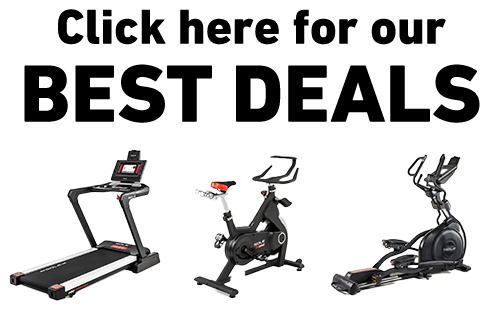Key Takeaway
- Diamond pushups activate triceps more effectively than regular pushups.
- Regular pushups provide better chest activation and foundational pushing strength.
- Hand position dramatically changes muscle emphasis during pushups.
- Master regular pushups before attempting diamond variations.
- SOLE equipment transforms your pushup training by providing progressive angles with the SW116 bench, wrist-friendly cushioning equipment mat, and natural progression to weighted exercises with adjustable dumbbells.
Diamond vs Regular Pushups: Which Builds More Muscle?
Pushups are the universal fitness test. Everyone from soldiers to weekend warriors uses them to build strength. But not all pushups give the same results. Diamond and regular variations might look similar, but they target muscles differently and present unique challenges.
Diamond pushups target your triceps with laser focus, while regular pushups spread the work more evenly across your chest, shoulders, and arms. Research shows diamond pushups produce more triceps activation than standard pushups. But regular pushups still win for overall chest development and serve as the foundation for all pushing movements.
|
At SOLE, we're proud to offer the best exercise equipment for your home or gym. Our machines are built to meet the highest quality and performance standards, making them perfect for fitness enthusiasts at any level. SOLE Products
|
Diamond Pushups: Technique & Muscles Targeted
Diamond pushups (also called triangle pushups) create a unique challenge by bringing your hands close together in a diamond or triangle shape. This small adjustment completely changes the exercise's difficulty and which muscles work hardest.
The narrow hand position in diamond pushups shifts tension from your chest to your triceps, making it one of the best bodyweight exercises for the back of your arms.
How to Perform Diamond Pushups Correctly
Start in a plank position with your hands directly under your chest. Bring your thumbs and index fingers together to form a diamond or triangle shape. Your hands should be centered under your sternum, not your shoulders. Keep your elbows tucked close to your body throughout the movement. This is crucial for maximizing triceps work and protecting your shoulders.
Lower your body by bending your elbows until your chest nearly touches your hands. Keep a straight line from head to heels. Don't let your hips sag or stick up in the air. Push back up by fully extending your arms. Control the movement both ways. No dropping to the floor or using momentum to bounce back up.
Primary Muscles Targeted: Triceps, Chest & Shoulders
The star of the diamond pushup is definitely your triceps. This three-headed muscle on the back of your upper arm gets worked from all angles during this exercise.
Your front shoulders work overtime to stabilize the movement, especially with the narrower support base. Your chest still helps, but it takes a back seat compared to regular pushups.
Why Diamond Pushups Are Harder Than Standard Pushups
Diamond pushups create a mechanical disadvantage that instantly makes things harder. The narrow hand position reduces your support base, demanding more stability from your core and shoulder muscles. Your triceps handle way more of the load compared to regular pushups, and these smaller muscles tire out faster than your chest.
Most people can do 50–70% fewer diamond pushups than regular ones. If you can do 20 regular pushups but only 8–10 diamond pushups, you're right where you should be. This isn't a weakness, it's just how biomechanics work.
Common Form Mistakes to Avoid
The biggest error with diamond pushups is letting your elbows flare out. When your elbows drift outward, you reduce triceps work and increase shoulder strain. Keep those elbows tight against your ribcage the whole time. Another mistake is putting your hands too far forward or back. Your diamond should be right under your sternum for best results.
Many beginners let their hips sag or pick up during diamond pushups. This kills core engagement and can hurt your lower back. Keep that straight-line plank position from head to heels throughout the exercise.
Regular Pushups: Proper Form & Muscle Engagement
The standard pushup is the gold standard of bodyweight training for good reason. It delivers balanced chest, shoulder, and triceps activation while teaching fundamental stabilization patterns.
Regular pushups build the foundation that makes all other pushing variations possible, including the harder diamond pushup.
Step-by-Step Guide to Perfect Regular Pushup Form
Start in a high plank with hands slightly wider than shoulder-width apart. Your fingers should point forward, and weight should be even between your hands and toes. Position your hands roughly in line with your mid-chest, not your shoulders or face.
Engage your core by pulling your belly button slightly toward your spine and squeeze your glutes to keep your spine neutral. Lower your body as one unit until your chest is about an inch from the floor. Your elbows should track at roughly 45 degrees from your body. Not flared wide to the sides or tucked tight against your ribs.
Push back up by pressing through your palms and extending your elbows fully. Keep tension throughout your body the entire time. Your head stays neutral, eyes focused on the ground about 6–12 inches in front of your hands.
Main Muscles Worked: Chest, Shoulders, Triceps & Core
Regular pushups mainly target your chest, with significant help from your front shoulders and triceps. Your serratus anterior (the muscle that wraps around your ribcage) gets substantial work stabilizing your shoulder blades. The standard hand position creates an optimal balance between chest and triceps activation.
Your core muscles, including your abs and obliques, work constantly to maintain your plank position. This makes regular pushups an effective total-body movement that builds functional strength across multiple muscle groups.
Why Regular Pushups Are the Foundation of Upper Body Training
Regular pushups teach your body to move as one integrated unit. They develop the pushing strength pattern that transfers to countless daily activities and athletic movements. The standard pushup position also puts your joints in a safer position, making it better for beginners and suitable for higher-volume training.
For most beginners, master the regular pushup before trying variations like the diamond pushup. If you can't do at least 10 solid regular pushups with perfect form, you probably lack the foundation strength needed for effective diamond pushups.
When to Choose Each Pushup Variation
Rather than viewing this as a competition, think of diamond and regular pushups as complementary movements that serve different purposes in a well-rounded training program.
Use Diamond Pushups For:
- Targeting triceps development
- Increasing overall pushup difficulty
- Breaking through plateaus in arm growth
- Improving stabilization strength
- Adding variety to prevent adaptation
Use Regular Pushups For:
- Building chest size and strength
- Developing pushing power
- Building foundational upper body strength
- Higher volume training (more total reps)
- Beginning a fitness journey
Progression Timeline: From Regular to Diamond
For beginners, master regular pushups before attempting diamond pushups. Once you can do 15–20 clean regular pushups, you have the foundation to try the diamond variation. Start with just 5–8 diamond pushups, focusing on perfect form rather than quantity.
Intermediate trainees should aim for a 2:1 ratio. If you can do 20 regular pushups, your target for diamond pushups would be 10. Advanced fitness enthusiasts often achieve a 3:2 ratio, where diamond pushup numbers reach 60–70% of regular pushup capacity.
5 Strategies for Using Both Pushup Types
The real magic happens when you smartly combine both pushup variations in your training plan. These five strategies offer effective ways to use both movements for maximum results.
1. Pre-exhaust Method
Do regular pushups first to tire out your chest, then immediately switch to diamond pushups. Your pre-fatigued chest forces your triceps to work even harder during the diamond variation. This creates an intense burn and growth stimulus for your arms.
2. Progressive Overload Technique
Start your workout with diamond pushups when you're fresh and can handle the most challenging variation. Do 3–4 sets, then move to regular pushups for higher volume work. This ensures quality work on the harder exercise while still getting plenty of total volume.
3. Alternating Sets
Perform a set of regular pushups to near failure, rest 15–30 seconds, then immediately do a set of diamond pushups. This creates tremendous metabolic stress across all the pushing muscles. The pre-fatigued state makes the diamond variation even more challenging.
4. Weekly Rotation
Structure your week to emphasize different pushup variations on different days. Monday might focus on regular pushups for the chest with 4–5 sets of 15–20 reps. Wednesday could target triceps with 4–5 sets of diamond pushups in the 8–12 rep range. This lets you train more often while still giving muscles time to recover.
5. Advanced Intensity Tricks
For those who've mastered both variations, try drop sets by doing diamond pushups until failure, then immediately switching to regular pushups. Another approach is tempo manipulation. Use a slow 4-second lowering phase on diamond pushups to increase triceps tension. For regular pushups, try explosive push-ups followed by slow lowering to maximize chest fiber recruitment.
Advanced trainees can also add isometric holds. For diamond pushups, hold the bottom position for 2–3 seconds for tremendous triceps tension. For regular pushups, pause halfway down to challenge your chest in its stretched position.
Use these advanced techniques sparingly, maybe once per week for each variation. They increase recovery demands and can lead to overtraining if overused.
Diamond vs Regular Pushups Comparison Table
|
Feature |
Diamond Pushups |
Regular Pushups |
|
Hand Position |
Hands together forming diamond/triangle under chest |
Hands slightly wider than shoulder-width |
|
Hand Placement |
Centered under sternum |
In line with mid-chest |
|
Primary Muscles |
Triceps (main), shoulders, chest (secondary) |
Chest (main), shoulders, triceps (balanced) |
|
Difficulty Level |
Harder (50–70% fewer reps than regular) |
Easier (foundational exercise) |
|
Elbow Position |
Tucked close to body/ribcage |
45-degree angle from body |
|
Support Base |
Narrow (less stable) |
Wide (more stable) |
|
Core Demand |
Higher (due to instability) |
Moderate |
|
Best For |
Triceps development, Arm size, Breaking plateaus, Advanced training |
Chest development, Overall pushing strength, Beginners, High volume training |
|
Prerequisite Strength |
15-20 regular pushups |
None (starting exercise) |
|
Rep Ratios |
Beginner: 5–8 reps Intermediate: 50% of regular Advanced: 60–70% of regular |
Beginner: 5–10 reps Intermediate: 15–25 reps Advanced: 30+ reps |
|
Common Mistakes |
Elbows flaring out, Hands too far forward/back, Hips sagging/piking |
Elbows flared too wide, Incomplete range of motion, Head dropping |
|
Wrist Stress |
Higher (inward rotation) |
Lower (neutral position) |
|
Transfer to Daily Life |
Specific triceps strength |
General pushing patterns |
Take Your Pushup Game to the Next Level with SOLE
Mastering both diamond and regular pushups is great, but why stop there? SOLE equipment opens up a whole new world of pushing exercises that complement your bodyweight training perfectly.
The SW116 Weight Bench lets you progress to incline and decline pushup variations; incline makes them easier for building up to diamonds, while decline adds serious intensity once you've mastered the basics.
When you're ready to add weight to your pushing movements, the SW180 and SW155 adjustable dumbbells provide the perfect transition from pushups to dumbbell presses. You can start with light weights that match your pushup strength and gradually progress without buying multiple dumbbell sets. Plus, exercises like close-grip dumbbell presses directly target the same triceps muscles as diamond pushups but with adjustable resistance.
Don't forget about comfort—the SOLE Equipment Mat gives you a cushioned, non-slip surface that protects your hands and wrists during high-volume pushup sessions. No more sore palms from rough floors or slipping during sweaty workouts. The mat's large size (36.5" x 78") gives you plenty of room for all pushup variations plus your other floor exercises.
The SOLE+ app ties everything together with guided workouts that show you how to progress from basic pushups through advanced variations, incorporating SOLE equipment when you're ready for the next challenge. No subscription fees, just expert guidance included with your equipment purchase.
Frequently Asked Questions (FAQ)
Are diamond pushups better than regular pushups for building bigger arms?
Yes, diamond pushups are way better for building bigger arms, specifically the triceps.
Research shows higher triceps activation during diamond pushups compared to regular pushups. Since your triceps make up about two-thirds of your upper arm mass, prioritizing diamond pushups leads to more noticeable arm development than regular pushups alone.
For complete arm development though, pair diamond pushups with pulling exercises that target your biceps. The push-pull balance ensures all arm muscles develop proportionally.
How many diamond pushups should a beginner aim for?
Beginners should first master 15–20 regular pushups with perfect form before trying diamond pushups. When starting diamond pushups, aim for 5–8 clean reps, focusing on quality over quantity.
If you can't do at least 5 diamond pushups with proper technique, keep building strength with regular pushups and try again after a few weeks.
Can I do diamond pushups if I have wrist pain?
Diamond pushups can increase wrist strain due to the inward hand rotation. If you have wrist pain, try using pushup handles or parallettes that let your wrists stay neutral. You can also do the exercise on your fists on a padded surface or try "knuckle diamond pushups" which keep wrists straight.
Always warm up your wrists thoroughly before diamond pushups, and stop if you feel sharp pain rather than normal muscle fatigue.
Which pushup variation is better for building a bigger chest?
Regular pushups are definitely better for chest development. The wider hand position creates greater chest stretch and activation. For maximum chest work, consider wide-grip pushups (hands wider than shoulders) which increase emphasis on outer chest fibers.
Diamond pushups, while excellent for triceps, reduce chest involvement by shifting load to the arms.
Can SOLE equipment help me progress from regular to diamond pushups?
Absolutely! SOLE equipment can be a game-changer for your pushup progression. If you're struggling to make the jump from regular to diamond pushups, the SW116 Weight Bench is perfect for bridging that gap.
Start by doing pushups with your hands on the bench (incline position), which makes them easier. As you get stronger, gradually lower the angle until you're on the floor, then work toward bringing your hands closer together.
The SOLE Equipment Mat is another sneaky helper - that cushioned surface reduces wrist strain, which is often what holds people back from diamond pushups. Plus, the non-slip surface means you can really focus on form without worrying about your hands sliding around.
And here's a pro tip: once you master diamond pushups, use the SW180 Adjustable Dumbbells for close-grip presses to take your triceps development even further.




Leave a comment
This site is protected by hCaptcha and the hCaptcha Privacy Policy and Terms of Service apply.